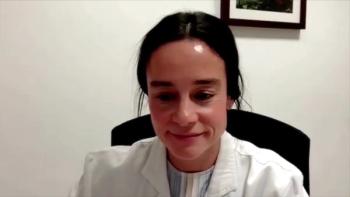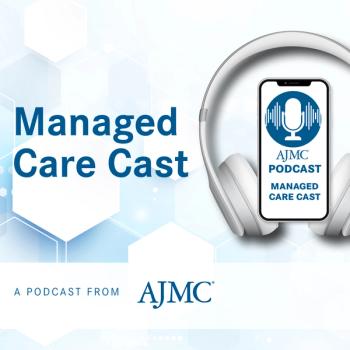
Dr Alison Moskowitz: Standard of Care for Hodgkin Lymphoma Depends on Stage of Disease, Patient Age
Alison J. Moskowitz, MD, medical oncologist, clinical director, lymphoma inpatient unit, Memorial Sloan Kettering Cancer Center, discusses how the standard of care for Hodgkin lymphoma varies based on several different factors.
Alison J. Moskowitz, MD, medical oncologist, clinical director, lymphoma inpatient unit, Memorial Sloan Kettering Cancer Center, discusses how the standard of care for Hodgkin lymphoma varies based on several different factors.
Transcript
What is the current standard of care for patients with Hodgkin lymphoma?
The current standard of treatment depends upon the patient’s stage at presentation and it also depends upon their age, as well. So, for patients who have early-stage disease, we tend to separate patients into whether or not they have any risk factors, and so whether they have favorable disease, which means they don’t have any risk factors, or whether they have unfavorable disease, which means they have at least 1 risk factor. So, that does determine how many cycles of chemotherapy that we give and typically, the standard of care for early-stage disease would be to use combined modality therapy, which means the combination of chemotherapy and radiation therapy. Although, particularly for women who are less than 30, where they may have a mediastinal mass and we’re worried about potentially putting them at risk for breast cancer in the future, we do try to avoid radiation therapy for many patients. In that setting then we are often using what we call a PET [positron emission tomography]-adapted approach for people who have a good response on their PET scan early on in their treatment, we often try to avoid radiation therapy. But the number of cycles and whether or not we’re going to include radiation therapy really depends upon on the patient’s sex, as well as their age, and how they’re presenting.
For patients with advanced-stage disease, so patients who have disease above and below their diaphragm, the standard of care would be a full course of chemotherapy, so that’s 6 cycles. Typically, our most common regimen we use is ABVD [doxorubicin, bleomycin, vinblastine and darcarbacine] chemotherapy, and that I am typically using in a PET-adapted approach, which was as described from the Rathl study and in that approach, I typically will repeat a PET-scan after 2 cycles of ABVD chemotherapy and for those patients who achieve a negative pet scan at that time, I will drop the bleomycin for the subsequent cycles 3 through 6, and that significantly reduces the toxicity associated with the treatment but has not been shown to decrease the efficacy of the treatment, so I think that’s a nice benefit for the patients.
For patients who don’t have a negative PET scan, for patients who still remain PET positive at that time, I would say my current practice, if there’s not a clinical trial available, would be to then escalate the patient’s treatment, and that’s also what was done in the Rathl study. So, that would be to give 4 cycles of escalated BEACOPP. That does appear to be associated with a better outcome when we escalate the treatment than if we were to continue on with ABVD chemotherapy.
There are other approaches, which are not used as commonly in the US. For example, it would not be unreasonable for patients who have higher risk, advanced stage disease to start with escalated BEACOPP, which is the regimen that has been designed by the German Hodgkin’s Study Group and is used more often in Europe. If I were to use that approach, I would follow also a PET-adapted approach, which was reported very nicely by the Lisa group, where patients who had a negative PET scan after 2 cycles of escalated BEACOPP then could be de-escalated to ABVD, and so they would only receive 2 cycles of escalated BEACOPP, and then receive the rest of their 4 cycles of chemotherapy with ABVD.
Newsletter
Stay ahead of policy, cost, and value—subscribe to AJMC for expert insights at the intersection of clinical care and health economics.






































